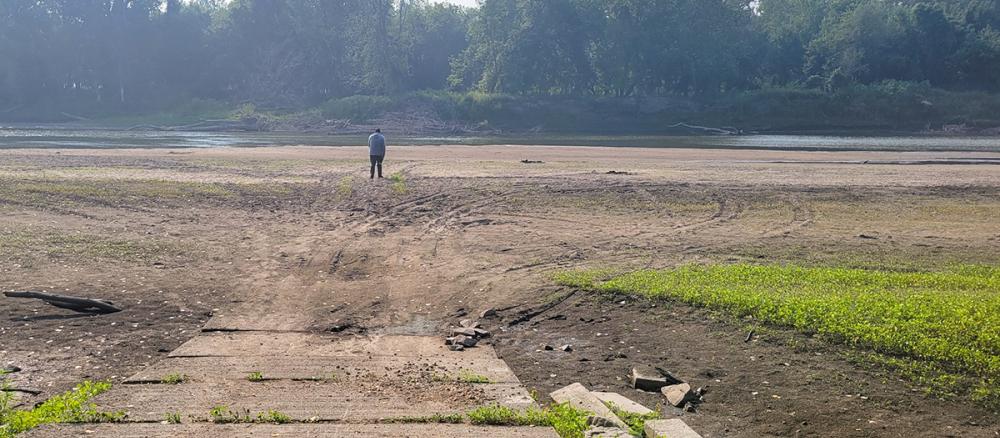Minnesota rivers are seeing the other side of extreme weather — drought and low flows — after a decade dominated by wet weather and high flows. While Minnesota and the rest of the nation have historically experienced periods of flooding and droughts, climate change is likely exacerbating the extremes.
It's been 33 years since Mississippi River flows coming into the Twin Cities were this low. The same for the Red River at Fargo. For the Rainy River, it was 2003; for the St. Croix River, it was 2009; and for the Lower Minnesota River, 2012.
How low? In the case of the Mississippi River, flows were 1,600 cubic feet per second (cfs) as of early August, compared to a long-term average of 6,000 - 7,000 cfs for this time of year. (Streamflow is typically reported in cubic feet per second, with a cubic foot equal to 7.5 gallons.)
“As climatologists have predicted, these more extreme conditions are what we can expect for future precipitation patterns and river flows,” says Lee Ganske, supervisor of the statewide Watershed pollutant load monitoring network for the Minnesota Pollution Control Agency (MPCA).
Fish and other critters are probably hot, stressed, and a little breathless these days.
Fish like walleye and other aquatic life are looking for deep cool spots to escape low flows and warmer temps, as water levels drop. Some of them, such as mussels, aren’t so mobile. They’re all trying to squeeze into a shrinking habitat space, as less water means less home for them. They can even become trapped in isolated pools of water with no escape from the heat or predators.
Fish and macroinvertebrates (bugs) like stoneflies are more susceptible to increasing water temperatures because there’s less water to absorb solar radiation and warmer water holds less dissolved oxygen. In addition, rivers can start to act more like lakes with stagnant water prone to growing algae. As algae die off, they use up oxygen in the water. Low oxygen can lead to fish kills.
“While we are not yet seeing any serious and obvious problems like harmful algal blooms or extensive fish kills in rivers, we are still concerned because the forecast calls for continued dry conditions,” Ganske says.
A silver lining
Though stressful to humans and river creatures alike, the drought does present some benefits.
“The good news is that rivers are getting a break from runoff bringing more sediment and nutrients into the water," Ganske says. "Generally, rivers are cloudy in the spring with runoff. This year’s drought means rivers have generally been clearer for a longer time.”
In addition, with streambanks and beds exposed, beneficial plants on land and in the water, like willows and pondweeds, can grow, helping keep loose sediment in place that would otherwise cloud the water and fill in pools or lakes downstream.
“Vegetation on the banks and in the water can see a real bump in low-flow conditions," Ganske says. "Their benefits can last for years."
Farmers, anglers, paddlers and outfitters are all hoping for rain, but it has to be the right kind. An intense downpour will likely run off the land before it can be absorbed, carrying pollutants into streams and eroding streambanks. It will take repeated gentle rainfalls for river levels to rebound.
For the MPCA, the low-flow conditions are a chance to do some rare monitoring. MPCA crews are deploying equipment this week in the Lower Minnesota River in the Twin Cities area to check dissolved oxygen levels and other water quality parameters. This is the first time in nine years that the agency has been able to check on the river under such stressful conditions. The monitoring will help verify that limits put on phosphorus in wastewater discharges are working to protect the river.
Landowners and individuals can help build resiliency to climate change and protect rivers by:
- planting and maintaining trees, especially along streams to help shade the water and keep it cool
- storing more water on the land by creating rain gardens and retention areas, to prevent damaging runoff
- planting native vegetation along streams to help filter runoff and prevent erosion
- lowering their carbon footprint to help stave off the worst effects of climate change
For more information, visit the climate change web pages.
